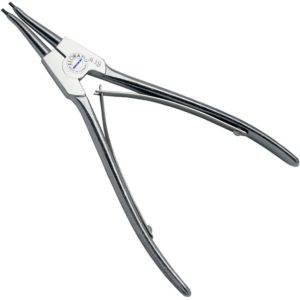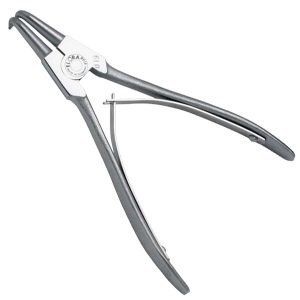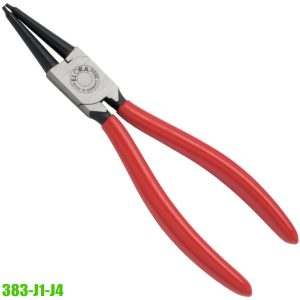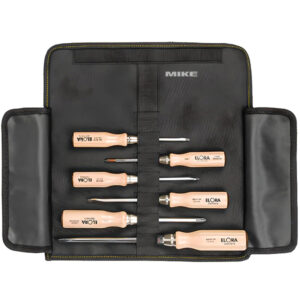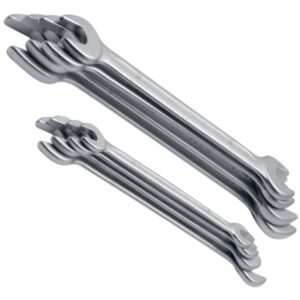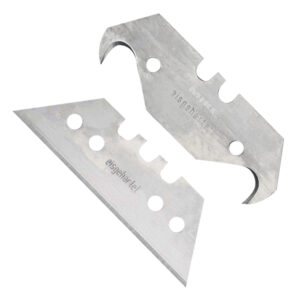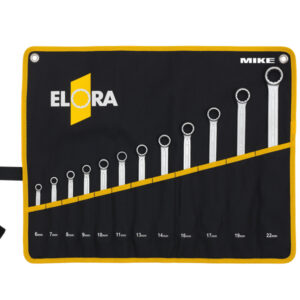Circlip pliers, also known as snap ring pliers or retaining ring pliers, are specialized hand tools used to install or remove circlips or snap rings. Circlips are small, flat, metal rings with open ends that are used to hold components onto a shaft or within a bore. They provide a simple and efficient way to secure parts such as bearings, gears, pulleys, and other components in various mechanical and automotive applications.
Circlip pliers are designed with specially shaped and angled jaws to engage with the circlip’s ends or tabs. They typically feature either internal or external jaws, depending on the type of circlip being worked on. Internal circlips are installed inside a bore, while external circlips are fitted onto a shaft.
Circlip Pliers – ELORA Germany
The jaws of circlip pliers may be straight or bent at an angle, depending on the specific application. Straight jaws are used for easier access to circlips in certain situations, while angled jaws provide better reach and control in confined spaces. Some circlip pliers also have interchangeable jaw tips to accommodate different sizes of circlips.
To use circlip pliers, you position the jaws around the circlip’s ends or tabs, then squeeze the handles together to compress or expand the circlip, allowing for its installation or removal. The pliers’ design allows for secure and controlled manipulation of the circlip, reducing the risk of damage to the circlip or surrounding components.
Circlip pliers are essential tools for professionals and enthusiasts working with circlips in mechanical, automotive, and other related fields. They make the process of installing or removing circlips much easier and more efficient compared to using general-purpose pliers or other makeshift tools.
How many types of circlip pliers are there?
There are generally two main types of circlip pliers: internal circlip pliers and external circlip pliers. Each type is designed to handle a specific type of circlip.
- Internal Circlip Pliers: These pliers are used to install or remove internal circlips, which are circlips that fit inside a bore or housing. Internal circlip pliers have curved or bent jaws that can fit inside the circlip and expand or compress it as needed.
- External Circlip Pliers: These pliers are designed for installing or removing external circlips, which are circlips that fit around a shaft or pin. External circlip pliers have straight or angled jaws that can engage with the circlip’s tabs or ends and compress or expand it for installation or removal.
Both internal and external circlip pliers come in various sizes to accommodate different circlip diameters. The jaws of these pliers may have different shapes, angles, or tips to match the specific configuration of the circlip being worked on.
Additionally, there are some specialized circlip pliers that are designed for specific applications. For example, there are miniature circlip pliers for working with small or delicate components, long-reach circlip pliers for accessing circlips in deep or confined spaces, and interchangeable tip circlip pliers that allow for different jaw configurations to be used with a single set of handles.
What’s the difference between straight jaw and 90-degree bent jaw circlip pliers?
The main difference between straight jaw circlip pliers and bent (angled) jaw is the orientation of their jaws. Here’s a breakdown of the differences:
- Straight Jaw Circlip Pliers: that are aligned in a straight line with the handles. The jaws are parallel to each other and do not have any angle or bend. These pliers provide a direct and straightforward approach to working with circlips. They are typically used when there is enough space and easy access to the circlip, allowing for a straight insertion or removal.
- Bent (Angled) Jaw Circlip Pliers: have jaws that are bent at a 90-degree angle or at another specific angle relative to the handles. The angled jaws allow for better reach and access to circlips in confined spaces or areas where straight access is limited. The angle of the jaws enables the pliers to reach around obstacles or work in tight spots where straight jaw pliers may not fit. They provide more versatility in terms of accessing circlips at different angles or in hard-to-reach locations.
The choice between straight jaw and bent jaw circlip pliers depends on the specific application and the accessibility of the circlip. Straight jaw pliers are suitable for situations where there is ample space and a direct approach is possible. Bent jaw pliers are preferred when there are obstructions or limited access, requiring a more flexible and angled approach.
Circlip Pliers
Showing all 5 results

